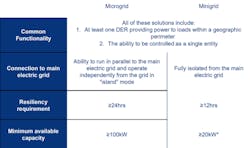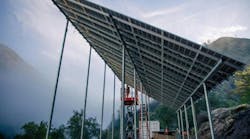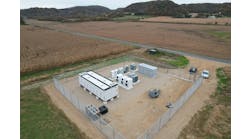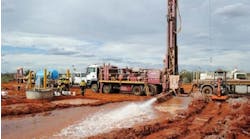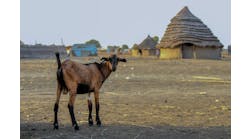Many people are shocked to learn that there are roughly 700 million people still living without electricity. Most are in countries like Kenya India and Bangladesh. Countries like Kenya are making progress and helping with that progress are technologies like minigrids.
Definition of a minigrid
Similar to a microgrid, a minigrid provides power to a community or campus of buildings. Generally minigrids are found in remote location where no central grid is available, according to Wood Mackenzie. Microgrids are typically connected to a central grid and are able to connect or disconnect when there are problems with the central grid, or it makes economic sense to do so. Many times folks refer to minigrids as a remote microgrids.
The chart below from Wood Mackenzie offers a graphic on the differences between a microgrids and a minigrids.
Commonalities and difference between microgrids and minigrids. Source:Wood Mackenzie Power & Renewables
The potential for minigrids to help bring electricity to remote areas is often overlooked. A recent report by Wood Mackenzie’s Energy Transition Practice identified Kenya as one of the most robust private sector minigrid markets. These factors are driven largely by Kenya’s goal for universal electricity access by 2022.
The report also cites other positive attributes such as a positive regulatory environment that is reducing risk for private sector investments. In addition, many households are in communities where a centralized grid is not economically feasible, opening the door for more minigrid investment opportunities.
You can download an executive summary of the Wood Mackenzie study on the Kenyan minigrid market opportunity here.
For more articles on energy solutions for rural communities visit our remote microgrids channel.
